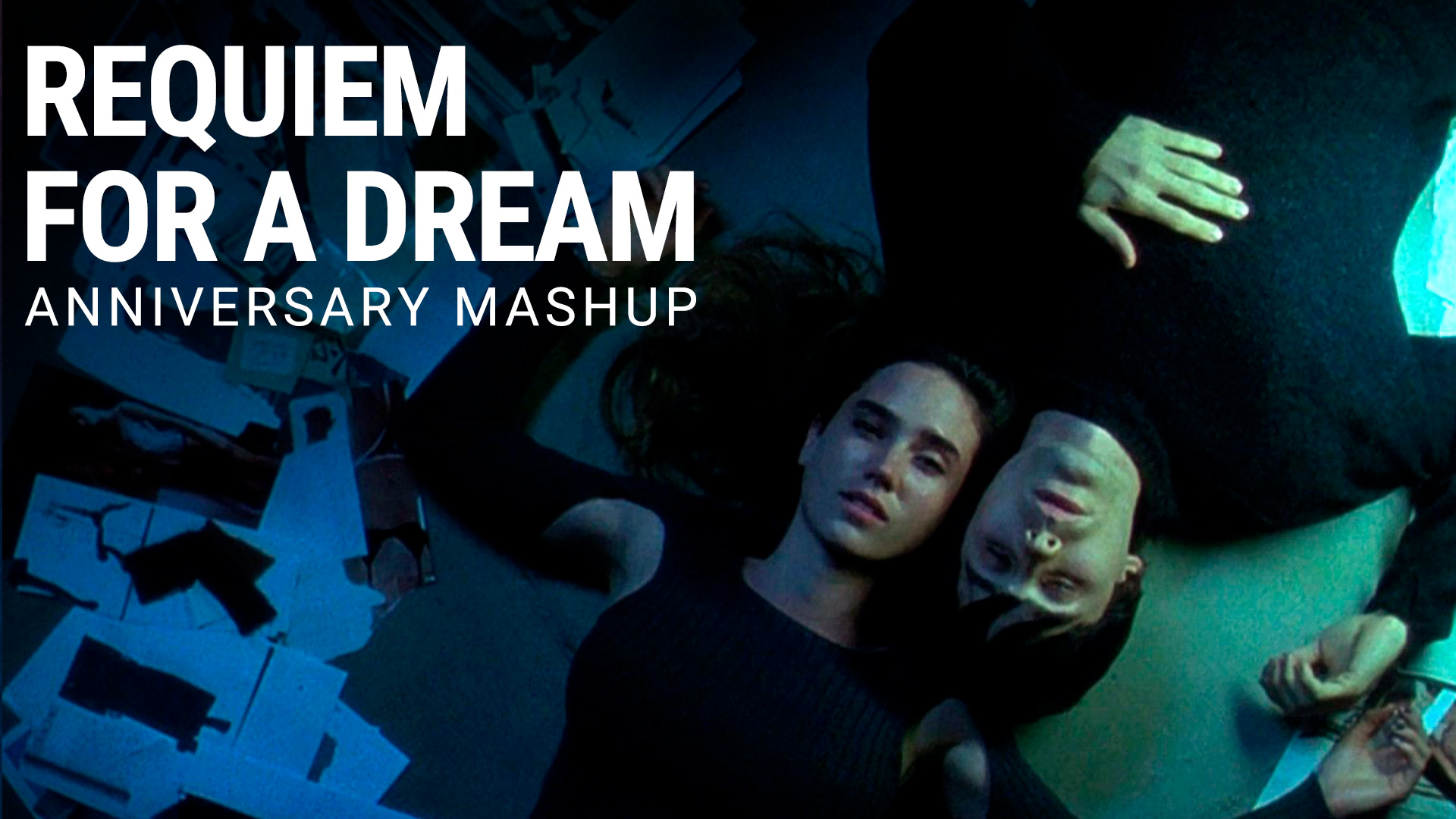Requiem for a Dream (2000)

“Requiem for a Dream,” directed by Darren Aronofsky and released in 2000, is a haunting psychological drama that delves into the destructive nature of addiction and the relentless pursuit of unattainable dreams. Based on Hubert Selby Jr.’s novel of the same name, the film features powerful performances from an ensemble cast, including Ellen Burstyn, Jared Leto, Jennifer Connelly, and Marlon Wayans. With its innovative storytelling, striking visuals, and evocative score, “Requiem for a Dream” remains a profound and unsettling examination of human vulnerability and the consequences of desire.
The film tells the interconnected stories of four characters whose lives spiral into chaos as they grapple with their respective addictions. At the center is Sara Goldfarb, portrayed by Ellen Burstyn, a lonely widow who dreams of being on television. Her desire to fit into a societal ideal drives her to extreme measures, including the use of amphetamines to lose weight. Burstyn’s performance is both heartbreaking and powerful, capturing the character’s descent into madness with haunting authenticity. The film’s portrayal of Sara serves as a poignant reminder of how societal pressures can distort reality and lead individuals to make devastating choices.
Jared Leto plays Harry Goldfarb, Sara’s son, who, along with his girlfriend Marion Silver (played by Jennifer Connelly) and his friend Tyrone (portrayed by Marlon Wayans), becomes entangled in a world of heroin addiction. Harry’s aspirations of becoming a successful drug dealer are quickly overshadowed by the insidious grip of addiction. Leto’s performance is raw and intense, embodying the desperation and disillusionment that characterize Harry’s journey. Similarly, Connelly’s portrayal of Marion reveals the struggles of an artist caught in the throes of addiction, illustrating the devastating effects it has on her dreams and relationships.
The narrative structure of “Requiem for a Dream” is both innovative and impactful. Aronofsky employs a variety of cinematic techniques to convey the psychological states of the characters, including rapid editing, split screens, and dynamic camera movements. These stylistic choices create a sense of urgency and disorientation, mirroring the characters’ internal turmoil. The film’s use of visual metaphors, such as the recurring image of the refrigerator, symbolizes the allure of comfort and the lengths to which the characters will go to achieve their desires.

The score, composed by Clint Mansell, plays a crucial role in establishing the film’s atmosphere. The haunting theme, performed by the Kronos Quartet, evokes a sense of impending doom and emotional weight, enhancing the impact of key scenes. The music serves as a poignant backdrop to the characters’ struggles, heightening the tension and despair that permeate the narrative. The combination of visuals and sound creates an immersive experience that resonates deeply with viewers, leaving a lasting impression long after the credits roll.
As the film progresses, the characters’ lives become increasingly intertwined with their addictions, leading to a series of tragic events that culminate in an unforgettable climax. The film’s portrayal of addiction is unflinching and brutally honest, showcasing the cycle of denial, desperation, and despair that ensnares individuals and their loved ones. Aronofsky does not shy away from depicting the harsh realities of drug use, instead presenting a raw and unvarnished view of its consequences. This approach challenges viewers to confront the darker aspects of human nature and the societal structures that perpetuate addiction.

One of the film’s most haunting elements is its exploration of the concept of dreams—both the aspirations that drive individuals and the nightmarish reality that often ensues. Each character clings to their dreams, whether it be Sara’s desire for television fame, Harry’s ambition for success, or Marion’s quest for artistic recognition. However, as their addictions deepen, these dreams morph into twisted fantasies, ultimately leading to their undoing. The film serves as a powerful commentary on the fragility of hope and the dangers of pursuing unattainable ideals in a society that often prioritizes superficial success over genuine fulfillment.

The film’s conclusion is both devastating and thought-provoking, leaving audiences with a profound sense of unease. Each character faces a harsh reckoning as their dreams disintegrate, resulting in tragic fates that serve as a stark reminder of the destructive nature of addiction. The final scenes, characterized by their emotional intensity and bleakness, linger in the mind, prompting reflections on the broader implications of addiction and the societal factors that contribute to it.

In conclusion, “Requiem for a Dream” is a masterfully crafted film that delves into the depths of human despair and the consequences of addiction. Through its compelling performances, innovative storytelling, and striking visuals, the film serves as a powerful exploration of the fragility of dreams and the human condition. Darren Aronofsky’s unflinching portrayal of addiction forces viewers to confront uncomfortable truths about desire, ambition, and the choices that shape our lives. “Requiem for a Dream” remains a poignant and thought-provoking cinematic experience, cementing its status as a modern classic in the realm of psychological drama.
Suggested videos for you:
Suggested videos for you:
Suggested videos for you:











